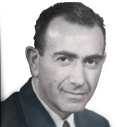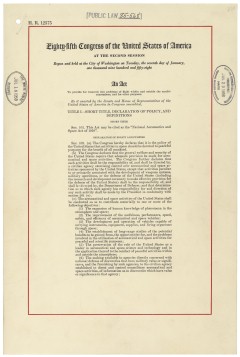Immediately after Sputnik everything loosened up. NASA was established and interest in doing space science accelerated. In the early 1960s, different groups were moving along independent paths toward what would eventually lead to NASA’s High Energy Astronomical Observatory (HEAO) program.
NASA’s Beginning: Before the National Aeronautics and Space Act of 1958, space exploration was primarily a military venture. On July 29, 1958, when the Space Act was signed by President Dwight D. Eisenhower, the United States established a civil space program that would be run by a new agency, the National Aeronautics and Space Administration, NASA. The Act charged NASA with eight objectives, including “the establishment of long-range studies of the potential benefits to be gained from, the opportunities for, and the problems involved in the utilization of aeronautical and space activities for peaceful and scientific purposes.”
Credit: National Archives and Records Administration
Using rocket-borne detectors, my group at the Naval Research Laboratory had been studying the X-ray emission from the Sun for over a decade, but we were unable to detect X-rays from sources outside the solar system. What was needed, I felt, were larger detectors with better efficiency and larger area. Of course, no one knew for sure just how efficient the detectors would have to be, since the properties of the X-ray sky beyond the solar system were a complete mystery. If all the stars were about the same strength as the Sun, then detectors thousands of times more efficient would be needed. This would mean detectors with thousands of times more area than those currently in use or an X-ray telescope - which didn't then exist - that could focus many X-ray photons into a small area.
The idea of a focusing X-ray telescope as the solution to this problem captured the imagination of two physicists in Cambridge, Massachusetts, Bruno Rossi at the Massachusetts Institute of Technology (MIT) and Riccardo Giacconi at American Science and Engineering (AS&E). In 1960, together they published a landmark paper advocating the use of grazing incidence reflectors to study cosmic X-rays, and predicted the Crab Nebula as a potential source.
At the time, I think everyone knew you could build an X-ray mirror, but the technology was still rather far off.


